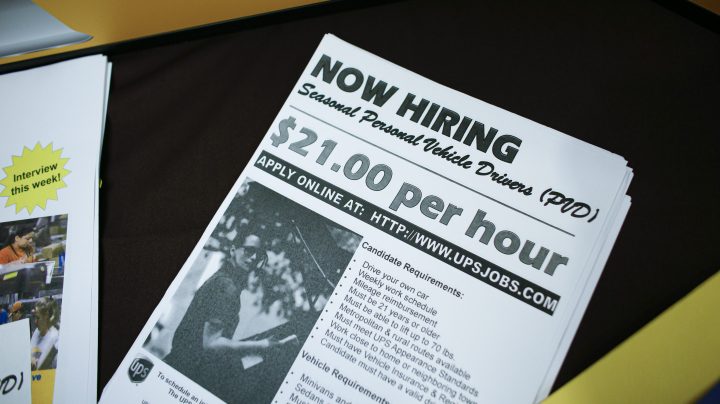
Where’s the sweet spot for wage growth?

Last month’s national jobs report was a blockbuster one beyond nearly anyone’s expectations. That depressed markets because the running assumption is that a very strong labor market will make it harder to bring down inflation. But how much does the job market have to suffer — and how much does wage growth need to slow — to get us to normal levels of inflation?
We all want a raise. All of us. So what’s wrong with that?
“If you have wages growing at a rapid pace, then businesses are either going to have to raise prices or they’re going to go out of business,” said Sarah House, senior economist at Wells Fargo.
OK, so what’s the level of wage growth that doesn’t drive a business under or fuel even more inflation? Because right now, wage growth is at 4.4% year over year.
It’s 3.5%, according to Mark Zandi, chief economist at Moody’s Analytics. But where exactly does that number come from?
“Wage growth is equal to the rate of inflation, plus the productivity growth of the workforce,” Zandi said.
Basically, that means wages go up with inflation, but they also go up with workers and businesses becoming more productive. Economists add a number for productivity growth to a (not bonkers) level of inflation, and they get 3.5%. The problem is that’s below where we are now.
So if wage growth has to slow, does that mean the labor market needs to suffer? Does unemployment need to rise?
“We don’t know the answer to that,” said Lawrence Summers, a professor of economics at Harvard and former U.S. treasury secretary who also headed the National Economic Council. “Demand needs to fall relative to supply if we’re going to bring down inflation. And historically, when that’s happened, there’s often a side effect of rising unemployment.”
Maybe the labor market won’t need to go down in flames, Zandi said, because wage pressure is already easing as our inflation expectations fall.
“In part, because gas prices are down, they’re moving in the right direction,” Zandi added. “We’re starting to see moderation in rent growth, and food prices seem to be headed in the right direction as well.”
So maybe workers won’t ask for raises as much or get as far when they do. But you should still try.
There’s a lot happening in the world. Through it all, Marketplace is here for you.
You rely on Marketplace to break down the world’s events and tell you how it affects you in a fact-based, approachable way. We rely on your financial support to keep making that possible.
Your donation today powers the independent journalism that you rely on. For just $5/month, you can help sustain Marketplace so we can keep reporting on the things that matter to you.











